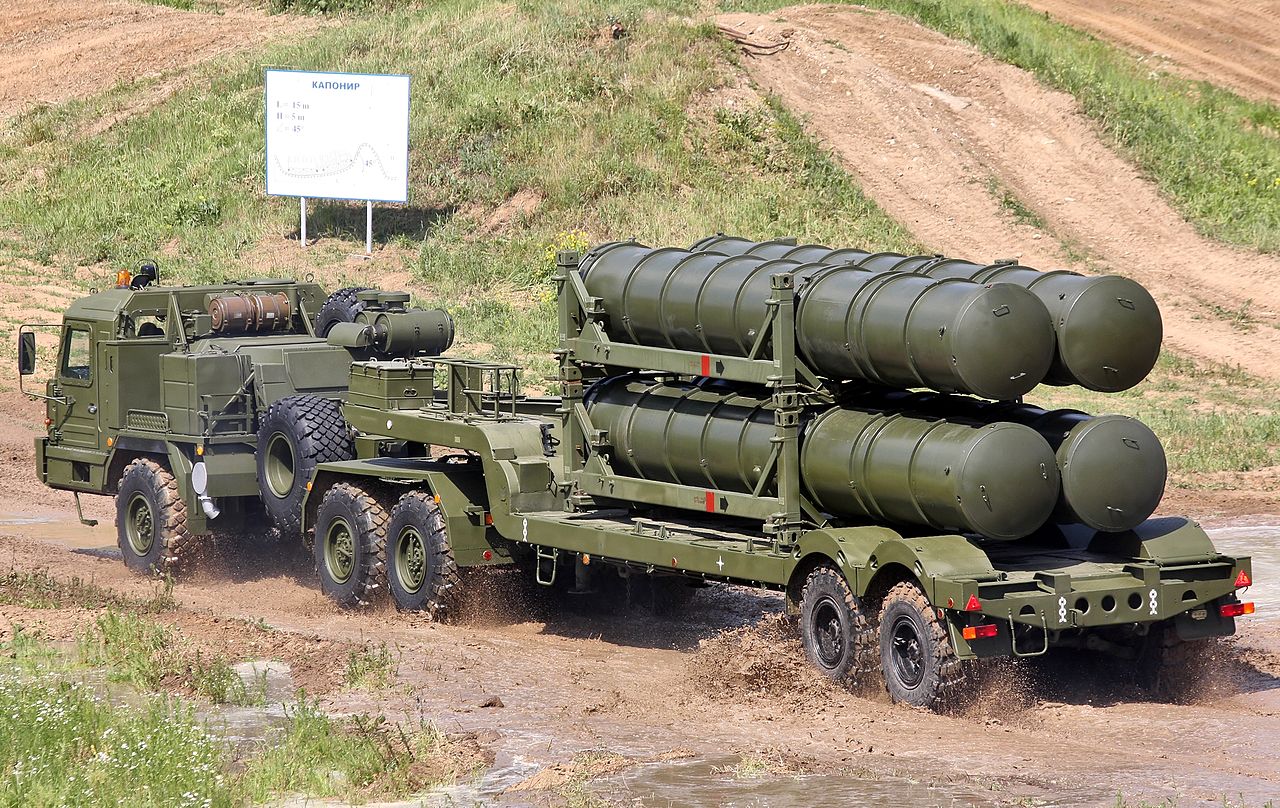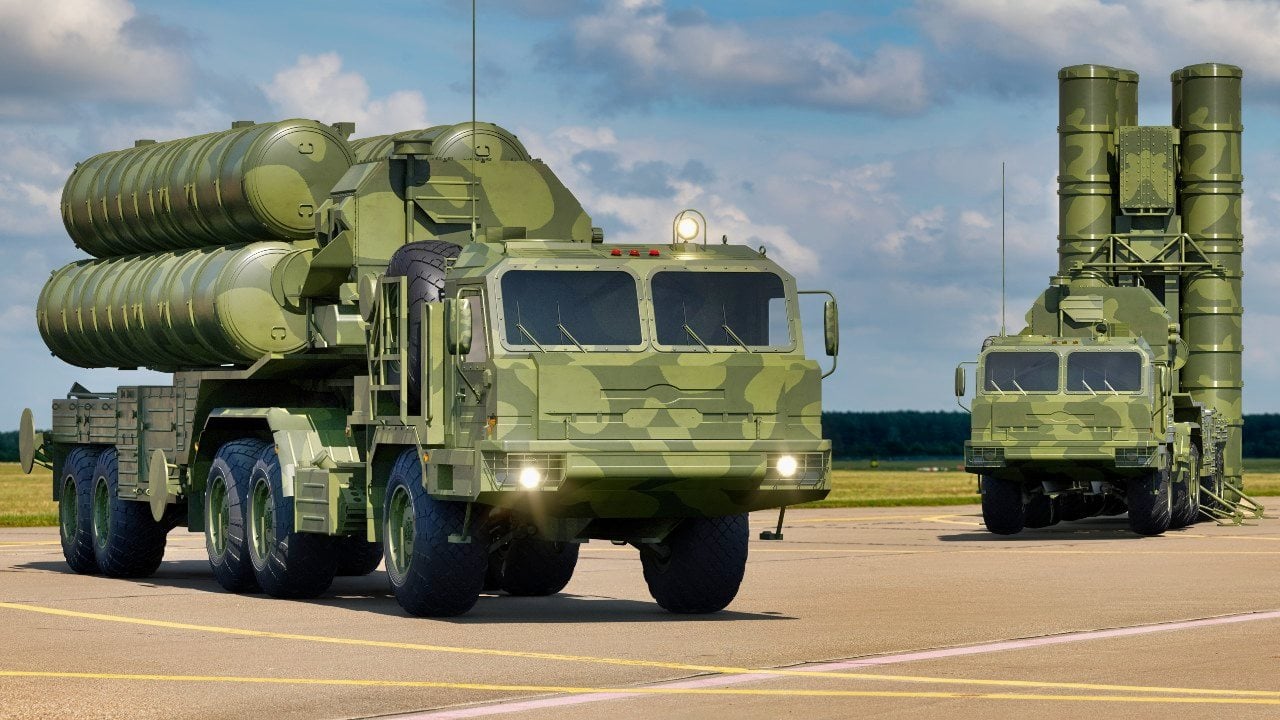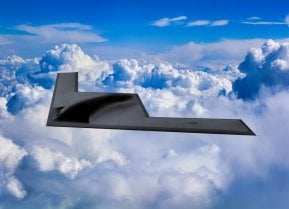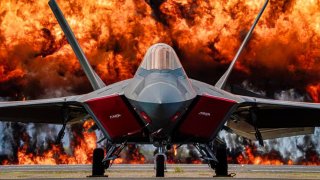S-400: Russia's Dangerous Missile System the Air Force Truly Worries About
While the S-400 may not be as infallible as the Kremlin likes to purport, the anti-aircraft system is still considered to be one of the best of its kind across the globe.
Russia’s S-400 primer: In December, Russia likely used 48N6 missiles from its S-400 system to strike targets in Kyiv. According to Ukrainian president Volodymyr Zelensky’s chief-of-staff, the powerful explosions that led to the destruction of 10 targets was the product of the Triumph surface-to-air missile (SAM). Considered by many analysts to be a near peer to America’s own Patriot SAM system, the S-400 is one of Moscow’s most critical weapons.
However, the Triumph has not been invincible against some of Kyiv’s Western-delivered weaponry. Since Russia first invaded Ukraine back in February 2022, the U.S. and its North Atlantic Treaty Organization (NATO) allies have provided billions of dollars’ worth of military aid to support Kyiv’s defensive efforts. Over the last two years of warfare, it is estimated that Moscow has lost its S-400 batteries on at least five separate occasions.
Despite these losses, the S-400 is certainly one of Moscow’s strongest systems in the ongoing war.
Introducing Russia’s family of SAMs
In the 1960s, the former Soviet Union first developed its long-range, high-altitude SAM system in order to defend large territories from bombers. The NPO Almaz S-200 (Angara) was derived from the earlier S-25 Berkut. By 1966, the first S-200 became operational with the Soviet Army.
Over the next decade or so, nearly 2,030 launchers were produced. The S-300 (designated by NATO as SA-10 Grumble) was developed as an enhanced version of its predecessor. Specifically designed to defend against cruise missiles and air raids, the S-300 is still considered to be a highly formidable system. Three S-300 variants have been introduced to service over the years- the S-300V, S-300P and S-300F with many more sub-variants.
The S-400 was announced by the Russian Air Force in 1993. In the late 1990s, state-run media outlets claimed that the missile was successfully tested and would be ready for deployment by 2001. However, over the next few years, the S-400 never entered service.
Additional tests had to be carried out and the missile system did not deploy with Russia’s Army until 2007. Nearly 80% of the S-400’s technology was adapted from its S-300 predecessor, including launchers, radars and missile storage containers. The primary difference between the two variants is the updated and refined radar system, enhanced software and incorporation of new missile types that the latter possesses.
As explained by Sandboxx News, the Triumph’s Nebo-M radar system combines three different arrays that broadcast on various frequency bands to locate, track and target low-observable aircraft.
This sophisticated radar reportedly can spot even America's most modern fifth-generation fighter jets: “Modern stealth fighters are designed to delay or prevent detection from higher frequency radar arrays broadcasting in parts of the S, C, X, and Ku bands, because these systems are capable of providing a “weapons-grade lock,” in other words, radar arrays that can guide a missile to a target. Lower frequency radar arrays leveraging the L or S bands are not capable of guiding weapons with this sort of accuracy — but are capable of spotting stealth fighters.”
How has the Triumph performed in Ukraine?
Following the onset of Kyiv’s counteroffensive this summer, Ukraine’s security service and navy carried out a successful attack targeting a Russian facility in Crimea. Using unmanned aerial vehicles (UAVs) and cruise missiles, Kyiv was reportedly able to disable both Russia’s S-300 and S-400 systems. Ukrainian officials stated that two Neptune missiles were responsible for the destruction.

Recent S-400 export to India:
One month prior to Ukraine’s Crimea attack, Russia revealed that it would provide S-400 anti-aircraft systems to India in the latest exchange between the two countries. Since Russia first invaded Ukraine, the West has imposed heavy sanctions on the Kremlin.
Moscow has turned to Iran and India for support. In fact, New Delhi is the world’s biggest arms importer and is a frequent customer of Russian technology. From nuclear-powered submarines to munitions, India has used Russia as a weapons and military equipment partner for decades. The country first purchased the Triumph back in 2018 for $5.8 billion and three of the five ordered systems have been delivered.

While the S-400 may not be as infallible as the Kremlin likes to purport, the anti-aircraft system is still considered to be one of the best of its kind across the globe. Several NATO allies have agreed to deliver 60 F-16 Fighting Falcon fighter jets to Kyiv in the near future.

Opponents of this promise argue that these fourth-generation airframes will be no match for the S-400 or its S-500 successor. While even newer fifth-generation fighters can minimize detection against high-frequency bands, no modern fighter can entirely evade detection against them. The S-400 may prove its worth against these fighters if deployed in the ongoing war.
About the Author: Maya Carlin
Maya Carlin, National Security Writer with The National Interest, is an analyst with the Center for Security Policy and a former Anna Sobol Levy Fellow at IDC Herzliya in Israel. She has by-lines in many publications, including The National Interest, Jerusalem Post, and Times of Israel. You can follow her on Twitter: @MayaCarlin. You can email this author: [email protected].
All images are Creative Commons.


